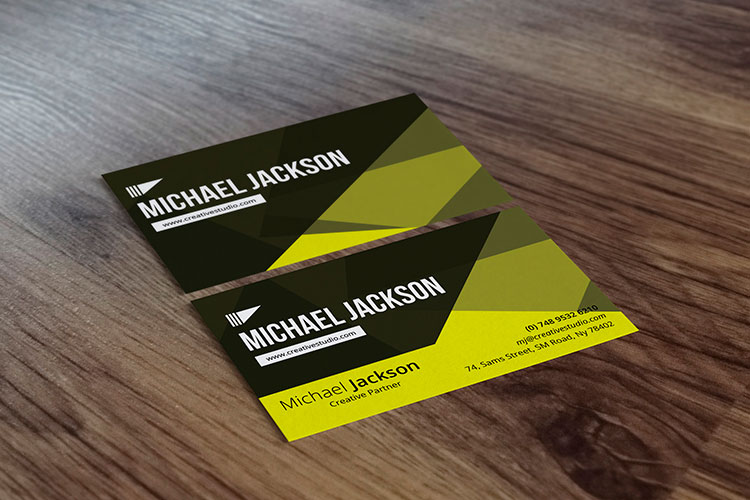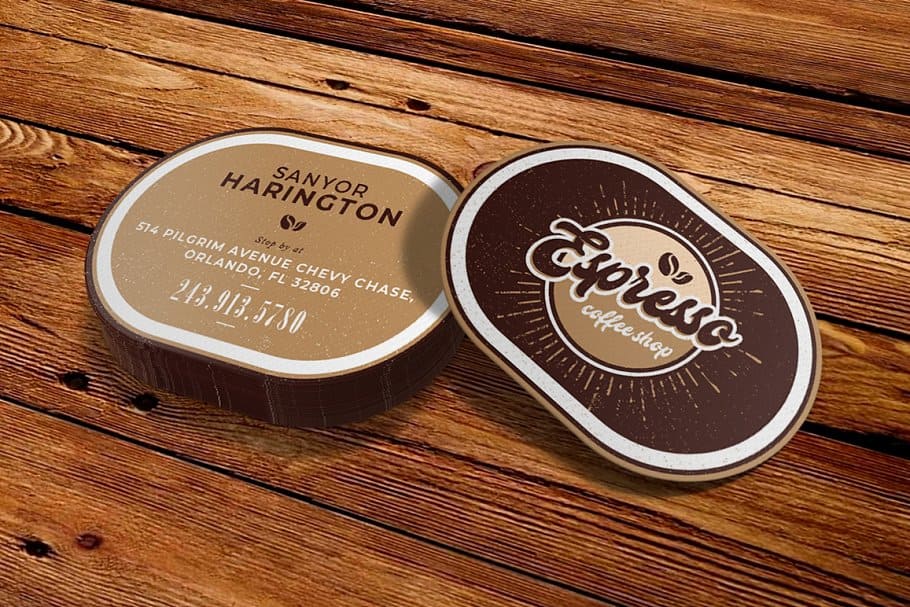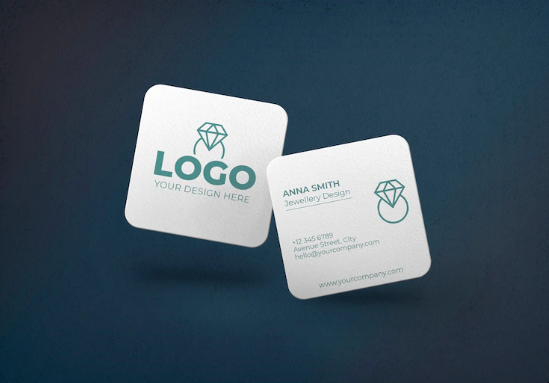- Products
- Shop By
- Products
- Shop By
TABLE OF CONTENTS
- Home
- stories
- lighting up the world with alfredo mosers invention
Lighting Up The World With Alfredo Moser’s Invention
Emma Davis
Content writer
Jul 27, 20244639 views
Jul 27, 20244639 views
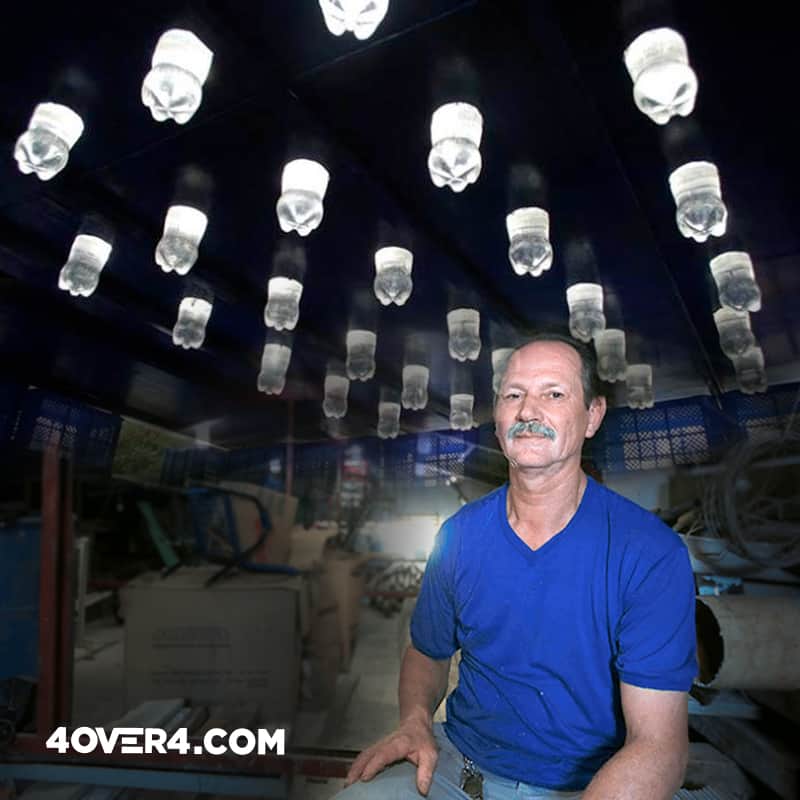
TABLE OF CONTENTS
In 2002, amidst frequent electricity blackouts in Brazil, Alfredo Moser, a Brazilian mechanic, embarked on a quest for illumination without relying on conventional power. His ingenuity led to the creation of the Moser lamp, a revolutionary light invention utilizing simple plastic bottles filled with water and a touch of bleach to illuminate interiors using refracted sunlight. This invention, born out of necessity during a blackout, not only solved Moser's immediate need for light but also sparked a global movement towards sustainable, easily accessible lighting solutions.
The Moser lamp, delivering 40 to 60 watts of light depending on natural light intensity, proved to be a beacon of innovation and sustainability. With its conceptual roots linked to an emergency signal idea, the lamp's implications stretched far beyond its initial purpose, illuminating over a million homes by early 2014. Despite its widespread adoption and attribution to renowned institutions like MIT, the true origin and brilliance of this light invention remain with Alfredo Moser, a modest mechanic who continues to explore sustainable solutions in Minas Gerais, Brazil.
The Genesis of Moser's Invention
In 2002, during a period marked by frequent electricity blackouts in Brazil, Alfredo Moser, a mechanic by profession, stumbled upon a revolutionary idea. The inception of the Moser lamp, a simple yet ingenious solution, was propelled by a casual conversation about creating light without conventional means. This dialogue sparked the idea that a water-filled plastic bottle could act as a source of light by refracting sunlight, leading to the creation of the first Moser lamp. This initial prototype was capable of producing an indoor light similar to a 40-60-watt bulb, significantly illuminating interiors without the need for electricity.
Key components of Moser's invention include:
- A clear plastic bottle of water and a small amount of bleach, to prevent algae growth and keep the water clear.
- Installation in a roof tile using polyester resin, ensuring the bottle is securely fixed and leak-proof.
- Enhancement with bleach in the water and polyester black film tape around the bottle cap to maintain the liquid's clarity and protect against UV degradation.
The lamp's adoption was swift among Moser's neighbors and local businesses, drawn by its cost-effectiveness and reliability compared to the erratic local electricity supply. This grassroots solution, born out of necessity and ingenuity, laid the groundwork for what would become a global movement known as the Liter of Light, illuminating homes in over a million households worldwide, including remote areas in the Philippines and communities in the Amazon region.
From Local Solution to Global Illumination
From its humble beginnings in Brazil, the Moser lamp has illuminated the path to sustainable lighting solutions across the globe. Its simplicity and effectiveness have made it a beacon of hope in areas where electricity is a luxury not all can afford. Here's how the Moser lamp's light has spread worldwide:
Global Reach and Impact:
- As of early 2014, the Moser lamp was expected to be in one million homes, showcasing its widespread acceptance.
- Notably, in the Philippines, 140,000 homes have adopted this innovative solution to combat high electricity costs. The MyShelter Foundation has played a pivotal role by training individuals to create and install these lamps, providing them with a source of income.
- Other countries that have embraced the Moser lamp include India, Bangladesh, Tanzania, Argentina, and Fiji, among approximately 15 others.
Inspiring Innovation:
- Alfredo Moser’s invention has not only provided a practical solution to a pressing need but has also inspired other inventors to think creatively about solving different problems. See other innovators and get inspired by them.
- This ripple effect of innovation underscores the transformative power of simple, yet effective, ideas

The Advent of the LED Moser Light:
- Recognizing the need for light during nighttime, the LED Moser Light was developed as an extension of the original concept. This adaptation ensures that the benefits of Moser’s invention extend beyond the daylight hours, providing a source of light at night in developing countries.
The Moser lamp's journey from a local solution to a global illumination tool exemplifies the power of innovative thinking in addressing universal challenges.
The Science and Mechanics Behind the Bottle Light
Alfredo Moser's innovative moser lamp harnesses the simple principle of sunlight refraction to illuminate interiors, offering a sustainable and cost-effective lighting solution. Here's a breakdown of how this remarkable invention operates:
Principle of Operation:
- Sunlight is refracted through a water-filled plastic bottle, acting as a lens to focus and disperse light.
- The bottle, containing water and a small amount of bleach, is securely installed in a roof tile using polyester resin, ensuring it remains leak-proof even during rainfall.
Components and Installation:
- Bottle: A two-liter plastic bottle filled with clear water and two capfuls of bleach to prevent algae growth.
- Installation: The bottle is installed through the roof with its bottom facing upwards, capturing and refracting sunlight to provide illumination equivalent to a 40-60 watt bulb.
- Sealing: Polyester resin is used to fix the bottle in place, ensuring durability and protection against leaks.
Hybrid Moser Bottle (HMB) System:
- The HMB system incorporates LEDs for nighttime illumination, powered by solar energy stored during the day.
- This system is designed to provide approximately 3.5 hours of light for every 12 hours of solar charging, making it ideal for communities with consistent daylight hours.
- Modifications to the system can be made to accommodate different lighting needs, ensuring versatility and adaptability.
This ingenious light invention not only provides free, sustainable lighting but also addresses the challenges of electricity accessibility in underprivileged areas, demonstrating a remarkable blend of simplicity and innovation.
DIY: Creating Your Own Moser Light
Creating your own Moser light is a rewarding project that illuminates spaces using sustainable sources. Here's a step-by-step guide to making two variations: a basic Moser lamp for daylight and an advanced LED Moser Light for night use.
Basic Moser Lamp:
- Materials Needed: 1-2 liter plastic bottle, black plastic film canister, water, bleach, and silicone glue.
- Preparation: Fill the bottle with water and add 2 capfuls (~20ml) of chlorine bleach to prevent algae growth, keeping the water clear.
- Installation: Secure the bottle in a roof tile or similar structure using silicone glue. For basements or cabinets, consider adding a 100-watt bulb or using PVC pipes to direct light.
Advanced LED Moser Light:
- Materials: Gather a 2 Ltr Bottle, Epoxy Glue, Drill, 12V Super Bright LED, wires, and a Battery/Solar Cell or Power Generator.
- Assembly: Drill a hole in the bottle cap, wire the LED to some cable, and thread it through the cap. Glue the LED in place.
- Powering: The LED can be powered by a battery, solar cell, or generator. Install in your roof or hang it inside if using battery power.
This LED variant, an evolution of the original Moser Light, offers off-the-grid illumination at night, making it a versatile and eco-friendly lighting solution.
Challenges and Considerations
While Alfredo Moser's invention of the moser lamp has illuminated countless lives, scaling this light invention to wider communities presents its own set of challenges.
Resource and Training Constraints:
- Materials: In communities where resources are scarce, gathering the necessary materials for bottle lights – such as clear plastic bottles, bleach, and installation tools – can be a significant hurdle.
- Knowledge Transfer: Illac Diaz's Liter of Light initiative highlights the importance of education in this process. Training volunteers not only in the construction but also in the maintenance of these lights, demands time, resources, and a continuous presence in the community to ensure sustainability.
Environmental and Technical Challenges:
- Natural Disasters: The aftermath of Typhoon Haiyan in the Philippines underscored the need for durable, community-maintained lighting solutions. Adapting the moser lamp to withstand such events involves local engagement and innovation.
- Nighttime Illumination: Integrating LEDs with the traditional moser lamp for use after dark introduces the need for off-grid power sources, complicating installation and maintenance in remote areas lacking electricity.
Logistical Hurdles:
- Market Creation: Establishing a sustainable market and delivery system for these lighting solutions, particularly in isolated regions, remains a daunting task. This includes navigating the logistics of material supply, volunteer training, and ongoing support to ensure the lights' effectiveness and durability.
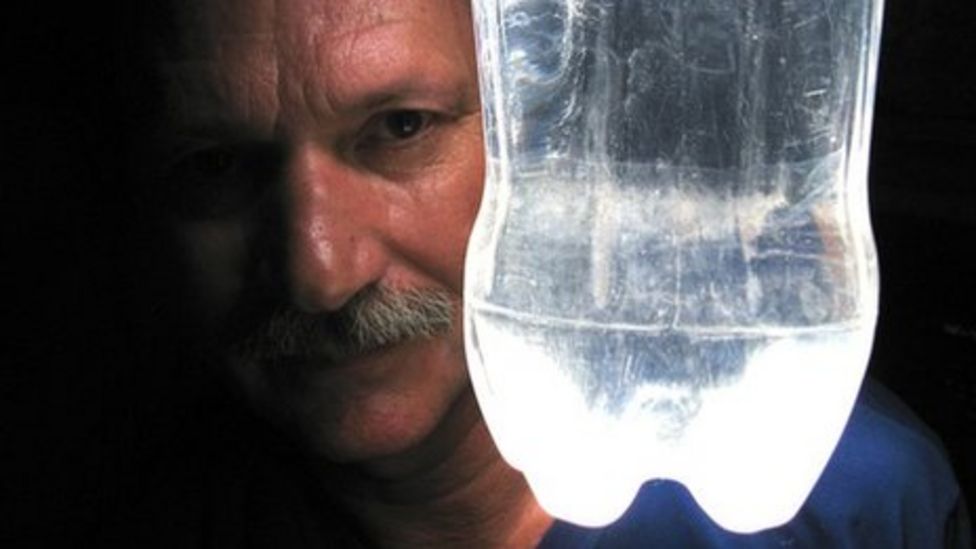
Legacy and Future Impact
Alfredo Moser's moser lamp has significantly impacted communities worldwide, especially in Brazil, where it has been a beacon of hope and innovation. The lamp's legacy and its future impact can be summarized through key achievements and ongoing initiatives:
Economic and Environmental Benefits:
- Cost Savings: Households using the moser lamp save money, enabling them to allocate funds to other essential needs.
- Hydroponic Farms: The invention supports small-scale hydroponic farms, promoting local food production and sustainability.
- Carbon Emission Reduction: Daytime lamps prevent 200 kilos, and nighttime lamps save 350 kilos of carbon emissions per lamp annually, contributing to environmental conservation.
Adoption and Adaptation:
- Approximately 11,000 homes in Brazil now enjoy illumination thanks to the moser lamp, addressing the electricity gap.
- The NGO Litro de Luz has innovated further by integrating solar panels for continuous nighttime use, enhancing the lamp's utility.
Social Empowerment and Sustainable Development:
- Litro de Luz focuses on quality and social empowerment, installing street and standing lamps and ensuring communities benefit from the technology.
- Despite not gaining financial benefits, Moser, now a retiree, continues to explore sustainable solutions, embodying the spirit of altruism and innovation for a better world.
4over4.com is all about making your dreams come true. Check our collection of resources for a better life and thriving business.
FAQs
What Did Alfredo Moser Create?
Alfredo Moser's invention, crafted in 2002, consists of a simple yet innovative lamp. This lamp is made by inserting a plastic bottle filled with water into a hole in the roof. It harnesses sunlight through refraction, offering illumination equivalent to a 40- to 60-watt incandescent bulb, all without the need for electricity or any other power source.
How Does the Moser Lamp Function?
The Moser lamp operates on a straightforward principle. Sunlight strikes the part of the bottle that is outside the building. Inside the bottle, the sunlight interacts with chlorinated water, which alters the light's refractive index, causing the light to 'bounce' around and effectively 'glow'. This process results in the part of the bottle inside the building emitting light comparable to a 55-watt bulb.
What Advantages Does the Moser Lamp Offer?
Introduced in 2002, the Moser lamp is a sustainable lighting solution crafted from a plastic bottle, water, and a bit of chlorine. A key benefit of this lamp is its eco-friendliness; it does not produce CO2 emissions. Additionally, it provides illumination equivalent to that of a 60-watt incandescent bulb, all while utilizing no electricity.
Who Is the Pioneer of the Water Bottle Light Bulb?
The innovative concept of using plastic bottles to create indoor lighting from daylight was pioneered by Alfredo Moser from Brazil. This idea was further expanded into a social enterprise by Illac Diaz in the Philippines through the My Shelter Foundation, officially starting in April 2011.
More from 4OVER4
3564
Whether you're an established business magnate or an emerging entrepreneur on the rise, one thing remains undeniable: <a href="https://www
Emma Davis
Jul 27, 2024
12120
People often overlook the importance of pocket folders in businesses. This is the world of digital media where LinkedIn and Google g
Jul 27, 2024
2710
A well-designed business card is important for making a memorable first impression. It represents your brand
Emma Davis
Jul 26, 2024
2204
A business card can help represent you professionally. These cards contain your contact info, job title, and company details. As a result, the
Matthew Prince
Jul 27, 2024
1687
New digital features have been introduced to business cards, making business connections more effective than they used to be. Technology has r
Matthew Prince
Jul 27, 2024
11644
First impression matters, especially when marketing your small business. An effective business card design will help you impress potential pro
Matthew Prince
Jul 26, 2024


